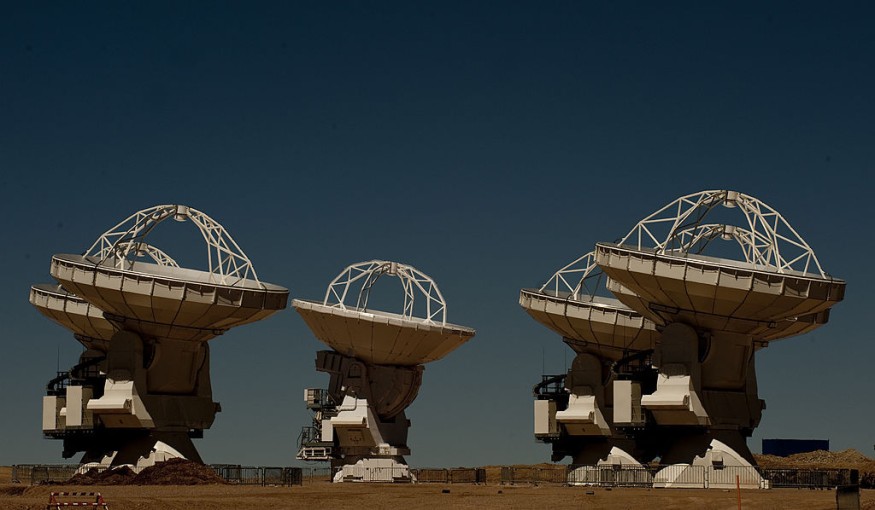For more than six decades, researchers have been pointing to radio antennas in the sky, hoping they will overhear a broadcast from an extraterrestrial civilization, proof that humans are not alone in the universe.
However, SETI, or the search for extraterrestrial intelligence or SETI, is akin to "listening for a whisper in a hurricane, a Daily Beast report specified and added, space is incomprehensibly huge.
A more specific search could be more fruitfulhttps://t.co/Vqa70JeqxL
— The Daily Beast (@thedailybeast) April 30, 2022
Essentially, there's noise sputtering from each direction, especially from the countless number of stars that die and are born.
An indication from extraterrestrial or ET might be pale. There are so many instruments, not to mention so much time, money, and manpower for intergalactic eavesdropping.
Worse, there might not even be a recognition of an extraterrestrial broadcast when it's heard. After all, no one knows how ET would, in fact, communicate.

Dual-Purpose 'Technosignature'
According to a specialist in information and communication sciences Ross Davis, at Indiana University, is willing to venture a guess at what extraterrestrial issues sound like from a distance.
He's hoping too, that could be enough to help SETI researchers cut through the noise and narrow their search. All of this, he explained, to help them arrive closer to the answer to one of the most important questions of humanity which is if three is life elsewhere in the universe.
In new research published in ArXiv and has yet to be peer-reviewed, Davis detailed how a high-tech extraterrestrial might use long-range microwave radio to deliver messages from one planet to another, and help navigate between them, as well.
With the so-called dual-purpose "technosignature" as a guide, practitioners of SETI could direct their attention to the spots in space where possible extraterrestrial broadcasts "make the most sense" thereby eliminating large chunks of the galaxy from the search pattern of SETI.
Radio SETI
It is a potentially smart and lavish solution to an old problem in radio-based SETI. Davis explained that historically, radio SETI has looked for only a small portion of the sky for "technosignatures."
This approach of Davis, if it makes it to peer review and sees widespread acceptance in SETI, could shrink to the cosmic ocean. More so, the quest for extraterrestrial signs would still encounter long odds, just a little less long.
Many researchers consider it a mathematical possibility that there's another life out there, somewhere. According to astronomer Martin Dominik, from the University of St. Andrews in Scotland, Earth is not the center of the universe. He, therefore, asked, why should humans "be the only ones?"
If these scientists are right and Homo sapiens is only one of many sentient species in the Milky Way, then, this "technosignature" of Davis could help in bringing forward the day when humans finally meet them.
Search for Artificial-Sounding Signal
What's now called the research field of SETI got its beginning in 1960, when Frank Drake, a Cornell University astronomer pointed an 85-foot-wide radio telescope in West Virginia at the stars Epsilon Eridani and Tau Ceti.
The latter mentioned is akin to the Earth's Sun. The former, on the other hand, occupies an area in the galaxy that's making it visible from the surface of the Earth.
The astronomer performed a quick scan, listening for a signal that sounded artificial, a similar Yahoo! Entertainment report said.
Essentially, SETI has gotten a lot more sophisticated since then. There are scientific bodies worldwide listening for alien talk.
Furthermore, researchers have started to scan for patterns of laser light as well, which could hint at extraterrestrial space exploration initiatives, a practice known as "laser SETI."
However, the exploration of the SET initiatives has not turned up any evidence of ET, leading some researchers to believe it is time to take a closer look at only a few areas of interest.
Related information about the discovery of extraterrestrial life is shown on What If's YouTube video below:
RELATED ARTICLE : Bloated 'Odd' Animal Washed Ashore in Australia: Is It a Possum, Kangaroo, or an Extraterrestrial Creature?
Check out more news and information on Extraterrestrial Life in Science Times.












